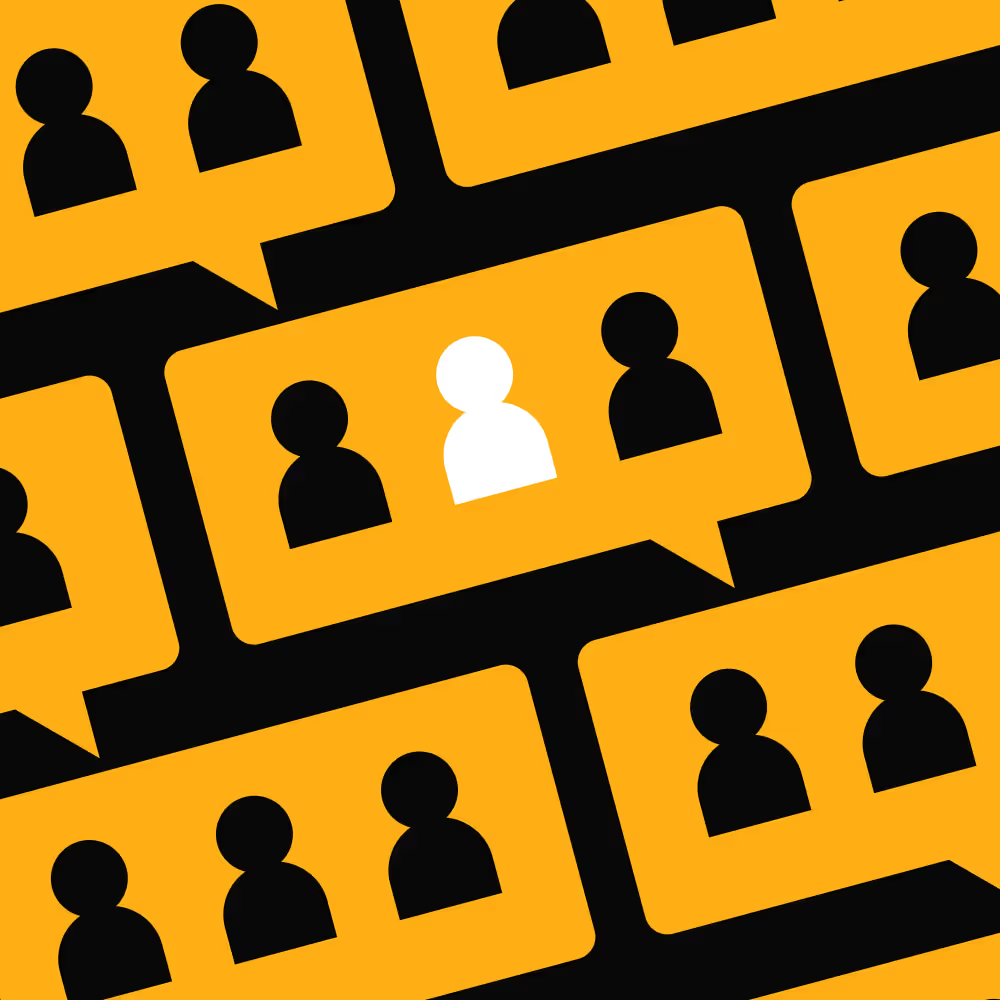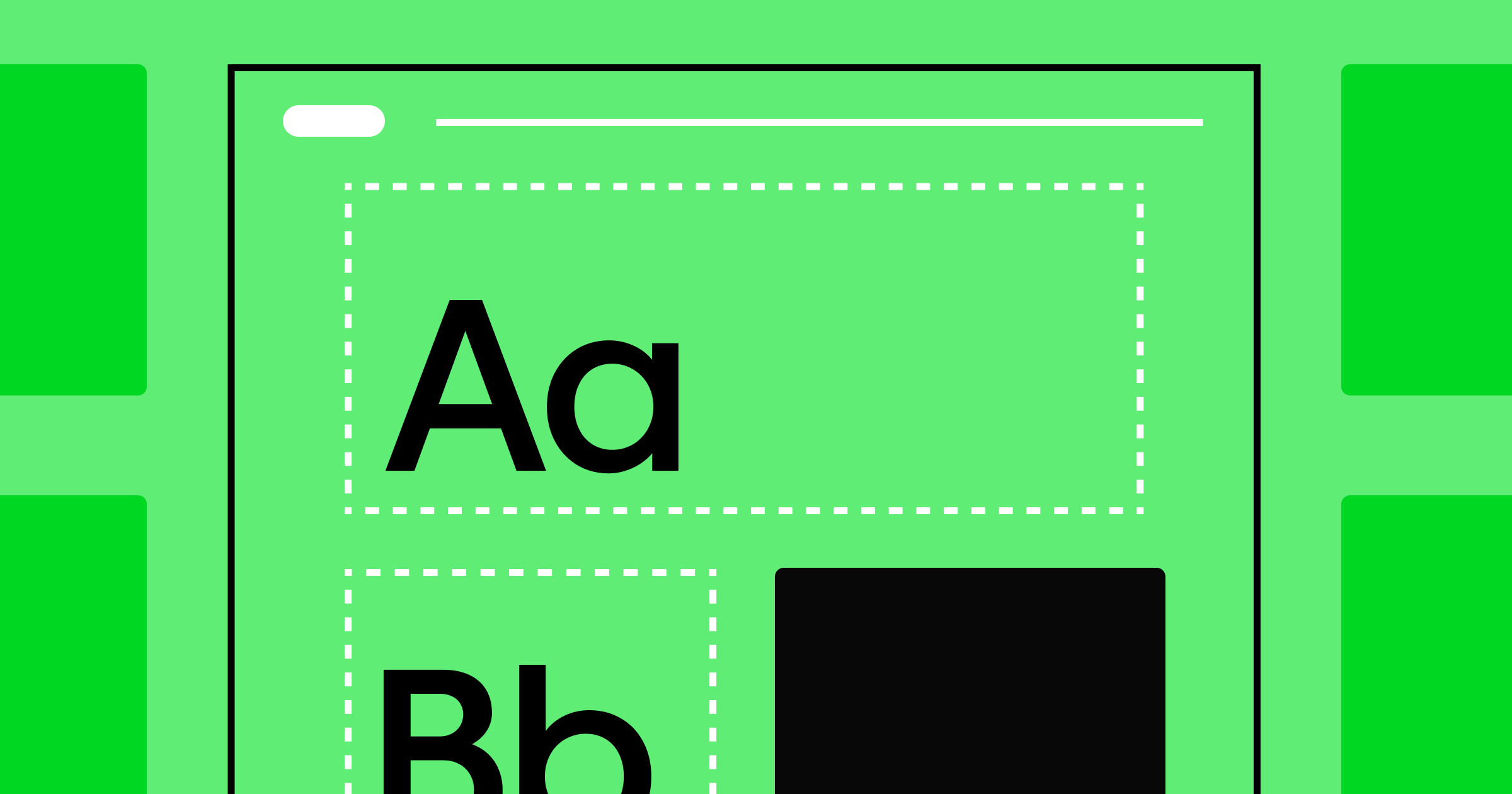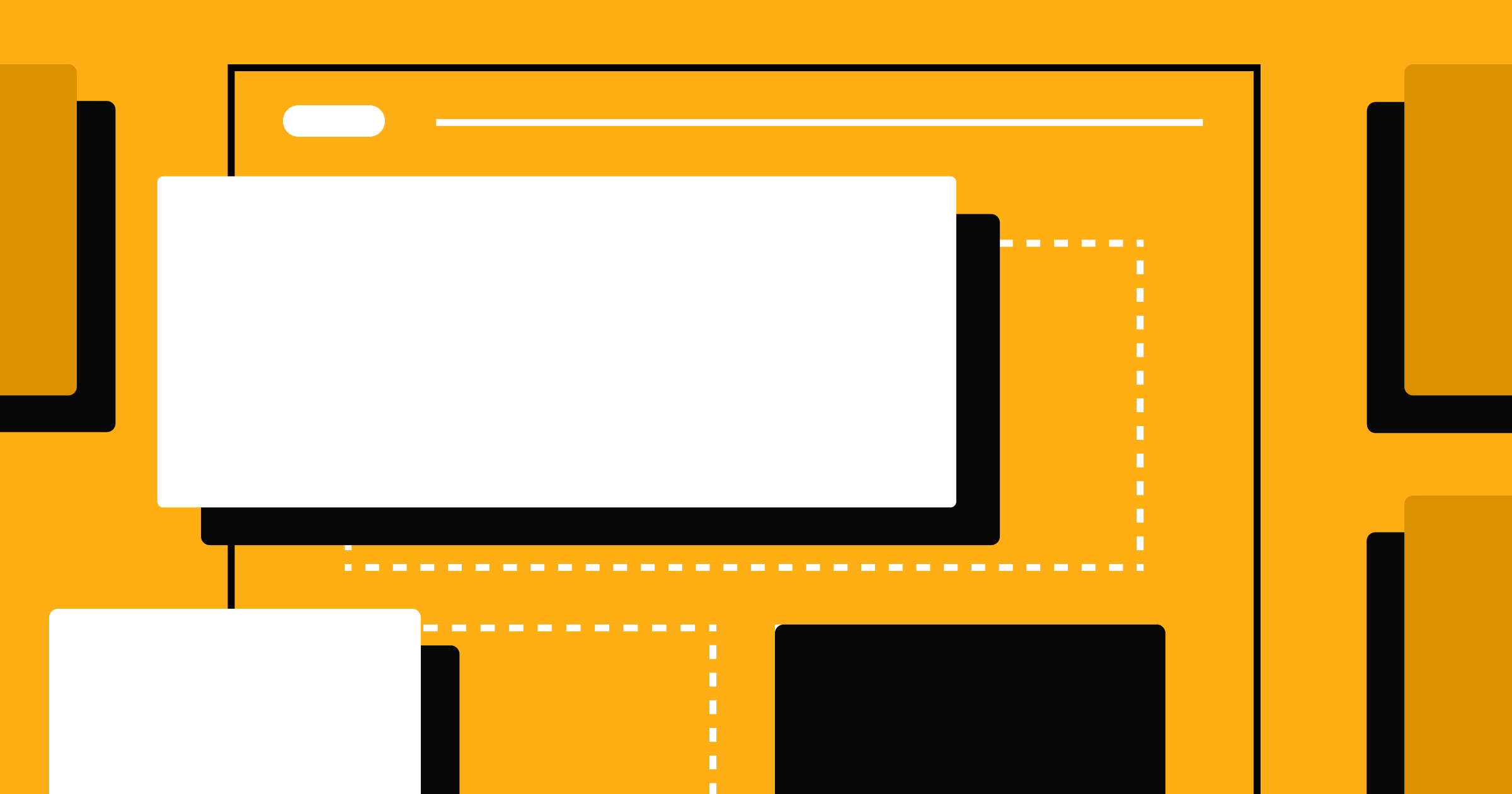Content personalization is the not-so-secret way to cut through all the digital noise and distractions to solve your customer’s problems and needs better (and faster).
Have you ever visited a website that seemed to know exactly what you were looking for? That's not mind-reading — it's content personalization at work. Nowadays, attention is perhaps the most precious online commodity, and personalization is how businesses can break through the noise and connect with their audience.
Below, we’ll walk you through everything you need to know about content personalization to leverage this powerful digital marketing strategy and connect with your audience.
What is content personalization?
Content personalization is the art of tailoring your digital content to match the unique interests, needs, and behaviors of individual users or specific customer segments. It's about delivering the right content to the right person at the right time on the right platform. The purpose is to create more relevant and engaging customer experiences for each visitor to your digital platforms.
In a traditional retail store, this personalization is seen in the super-talented, charismatic salesperson who remembers every customer's preferences and always recommends just the right thing.
Content personalization can be a little bit more intricate and nuanced when you take it online. With shrinking marketing budgets and increasing pressure to deliver results, it’s the most cost-effective way to stretch your investment and get your content working harder for you — and your audience.
Instead of presenting a one-size-fits-all approach, personalized content adapts based on various factors:
- User behavior and browsing history
- Demographics and location
- Purchase history
- Personal preferences
- Stage in the buyer’s journey
- Source links
Flashing banners, sponsored posts, in-feed videos, bright call-to-action (CTA) buttons — today’s users are bombarded with information. That’s why you need content personalization to cut through the noise. It's the difference between shouting into a crowded room and having a one-on-one conversation with each person in that room.
And, ultimately, it’s what your customers want. 88% of online shoppers say they're more likely to keep browsing and buying on a retail website that provides a personalized experience.
7 benefits of personalized content
Content personalization isn’t just a marketing buzzword of a passing fad — it’s a proven strategy for improving your online presence and boosting your bottom line. Here are just a few of the benefits of personalized content:
- Better user experience — Personalization makes your domain feel tailor-made for each website visitor. It serves up relevant content, product recommendations, and offers that keeps users engaged and coming back for more.
- Increased conversion rates — Personalization can boost conversion rates by presenting the right offer to the right person at the right time. After Sephora launched their Beauty Insider loyalty program that sends personalized content and recommendations based on individual profiles, 80% of their total transactions came from these customer loyalty members.
- Improved customer retention — Personalized experiences build stronger connections between your brand and potential customers. Consistently delivering content that aligns with their interests and needs turns one-time buyers into loyal, long-term customers.
- Higher engagement metrics — Relevant content naturally encourages more interaction. Personalization can lead to longer site visits, more pages viewed per session, and higher click-through rates. Lotte Mart used personalization to recommend products to customers, and it saw a 40% increase in the number of products sold that customers had never purchased before.
- More efficient marketing spend — Personalization helps you make the most of every interaction, potentially reducing customer acquisition costs.
- Competitive advantage — Personalization helps you differentiate your brand from competitors who are still taking a one-size-fits-all approach.
- Streamlined customer journey — Personalization can guide users more seamlessly through your sales funnel. It presents the most relevant information at each stage for a smoother path from awareness to purchase.
How content personalization works
Most of the time, we just see the end product of content personalization — perfect content for our needs and situations. However, there’s a method to the magic.
Collect audience data
First, we need rich, relevant data. Think of gathering data as getting to know your digital visitors, just like you'd get to know regulars at a brick-and-mortar store.
Behavioral data — like browsing history and purchase patterns — and demographic information — age, location, job title — form the backbone of personalization. This data helps create a comprehensive picture of each user, allowing you to tailor content to their specific needs and preferences.
Here’s how you can collect that data:
- Web analytics tools like Webflow Analyze or Google Analytics
- Customer Relationship Management (CRM) systems
- Social media insights
- Surveys, quizzes, and feedback forms
- Email engagement metrics
Once you collect this data, you need to analyze and segment it. Tools like Segment or Mixpanel can help you organize and interpret this information to turn raw data into actionable insights.
Personalization techniques and tools
With data in hand, it's time to put it to work. There's a wide range of techniques and tools available to implement content personalization.
Dynamic content adapts in real-time based on user data. This content could be as simple as showing different homepage banners based on a user's location, or as complex as completely restructuring page content based on a user's browsing history.

Another avenue is product recommendations. Machine learning algorithms can analyze user behavior and purchase history to suggest relevant items. Amazon's "Customers who bought this also bought" feature is a classic example of personalized content in action — and so are its other homepage product recommendations.
Personalization platforms like Dynamic Yield or Evergage offer end-to-end solutions, while tools like Webflow Optimize help refine personalization strategy and gather more data.
AI-driven content personalization
Artificial intelligence is transforming the future of content personalization, taking it from reactive to predictive. AI algorithms can process vast amounts of data at lightning speed, identifying patterns and making predictions that would be impossible for humans to manage manually. This efficiency allows for real-time personalization at scale, creating unique content experiences for each user across your digital properties.
While Webflow doesn't currently offer built-in AI-driven personalization, it provides a solid foundation for implementing personalized experiences. With Webflow, you can:
- Create dynamic content using CMS collections and custom fields
- Implement conditional visibility to show or hide elements based on user interactions
- Use Webflow's API to integrate with third-party personalization tools
- Leverage Webflow's SEO features to guarantee your personalized content is discoverable
Webflow's visual development platform makes it easier to design and implement personalized user interfaces without extensive coding knowledge. This platform allows marketers and designers to take a more hands-on approach to personalization to create and test different personalized experiences quickly.



















The marketer's guide to personalization
Discover how to create personalized website experiences that meet buyers’ expectations in this ebook.
Best practices for your content personalization strategy
Here are some tried-and-true best practices to help you navigate the personalization landscape and create experiences that resonate with your target audience.
Understand your audience
Personalization starts with a deep understanding of who your audience is and what makes them tick. This goes beyond basic demographics — it's about understanding their needs, preferences, and behaviors.
Segmenting your audience is non-negotiable for effective personalization. By grouping users with similar characteristics or behaviors, you can create more targeted and relevant experiences. Consider factors like:
- Demographics — Age, location, job title
- Behavior — Browsing history, purchase patterns
- Psychographics — Interests, values, lifestyle
Creating accurate customer personas helps bring these segments to life. Use a mix of quantitative data (from analytics tools) and qualitative insights (from customer interviews or surveys) to build detailed profiles of your typical users. These personas will guide your content creation and personalization efforts to guarantee you're always speaking to a real person — never just a data point.
Create dynamic content
Dynamic content is the heart of website personalization. It's content that adapts and changes based on who's viewing it to create unique experiences for each user.
To develop dynamic content:
- Identify key variables — Determine what elements of your content should change based on user data, such as headlines, images, and product recommendations.
- Create content variations — Develop different versions of your content for each user segment or persona.
- Set up rules — Use if/then logic to determine which content variation to show based on user data.
For example, an ecommerce site might show different featured products on the homepage based on the user's browsing history. A B2B software company could adjust its case studies based on the visitor's industry or company size.
Dynamic content doesn't have to mean creating entirely new pages for each user. Small, strategic changes can have a big impact on relevance and engagement.
Monitor and optimize personalization efforts
Personalization is not a "set it and forget it" strategy. It requires ongoing monitoring and optimization to deliver results.
To track your personalization efforts:
- Set clear KPIs — KPIs might include engagement metrics like time on site, pages per session, conversion rates, or customer lifetime value.
- Use A/B testing — Compare personalized experiences against non-personalized ones to quantify the impact.
- Analyze user feedback — Both explicit (surveys, reviews) and implicit (behavior patterns) feedback can provide valuable insights.
Tips for continuous improvement:
- Regularly review and update your audience segments and personas as you gather more data.
- Experiment with different types of personalization and content variations.
- Stay on top of new personalization technologies and techniques.
- Always prioritize user privacy and give users control over their data and personalization preferences.
The goal of personalization is to create better, more relevant experiences for your users. Keep this user-centric focus at the heart of your efforts, and you’ll stay on the right track.
Common challenges (and solutions) in content personalization
Content personalization is a tried-and-true way to engage your audience, but it has its fair share of challenges and obstacles. Here are some solutions to help you overcome these challenges and keep your momentum.
1. Data privacy concerns
Collecting and using customer data for personalization can raise red flags. Users may be wary of sharing their information, and regulations like GDPR and CCPA add another layer of complexity.
Solution: Prioritize transparency and user control. Clearly communicate what data you're collecting and how you're using it. Implement data protection measures and give users easy opt-out options. Consider using first-party data and contextual personalization techniques that don't rely on personal information.
2. Content overload
Creating personalized content for multiple audience segments can quickly become overwhelming. You might find yourself drowning in variations, struggling to maintain quality and consistency across all your personalized content.
Solution: Start small and scale gradually. Begin by personalizing high-impact areas of your site or key points in the customer journey. Use a modular content approach, where you personalize specific elements rather than entire pages. Leverage AI and automation tools to help generate and manage content variations.
3. Technical implementation challenges
Implementing personalization often requires integration with existing systems, which can be easier said than done. You might face issues with data silos, incompatible technologies, or lack of technical expertise.
Solution: Choose personalization tools that integrate well with your existing tech stack. Consider platforms like Webflow that offer built-in personalization and dynamic content features or easy integration with third-party tools. If you're facing technical limitations, start with simpler forms of personalization, like location-based content, and gradually build up to more complex implementations.
4. Measuring ROI
It can be hard to accurately measure the impact of personalization efforts, especially when multiple factors influence user behavior and conversions.
Solution: Set clear, measurable goals before implementing personalization. Use A/B testing to compare personalized experiences against non-personalized ones. Look beyond surface-level metrics to consider long-term impacts like customer lifetime value and retention rates.
5. Maintaining relevance over time
User preferences and behaviors change, and what was relevant yesterday might not be relevant tomorrow. Keeping your personalization strategy up-to-date can be a constant challenge.
Solution: Implement continuous learning and optimization processes. Regularly review and update your audience segments and personalization rules. Use AI and machine learning algorithms that can adapt in real-time based on user behavior.
Here’s a quick recap of everything we’ve discussed:
- Content personalization tailors your digital experiences to individual users to create more engaging and relevant interactions.
- Benefits of personalization include: better user experiences, increased conversion rates, improved customer retention, and more efficient content marketing spend.
- Effective personalization relies on collecting and analyzing user data, implementing the right tools and techniques, and leveraging AI for scalability.
- Best practices include understanding your audience through segmentation, creating dynamic content, and continuously monitoring and optimizing your efforts.
- While challenges exist — from data privacy concerns to technical implementation — there are practical solutions to help you navigate these hurdles.
Implement content personalization with Webflow
Right now, content personalization gives your business a competitive edge in the digital landscape. However, it won’t be long before it shifts from a nice-to-have to a need-to-have. If you’re ready to evolve from a content personalization consumer to a builder, we can help.
Webflow Optimize offers powerful personalization features that seamlessly integrate with your Webflow site. Whether you're looking to implement basic segmentation or advanced, AI-driven personalization, Webflow has the tools and support you need.
Learn more about Webflow Optimize or contact our sales team to discuss your personalization needs.

Discover what performs best and deliver it at scale
Maximize conversions with rapid insights, tailored visitor experiences, and AI-powered delivery.
































